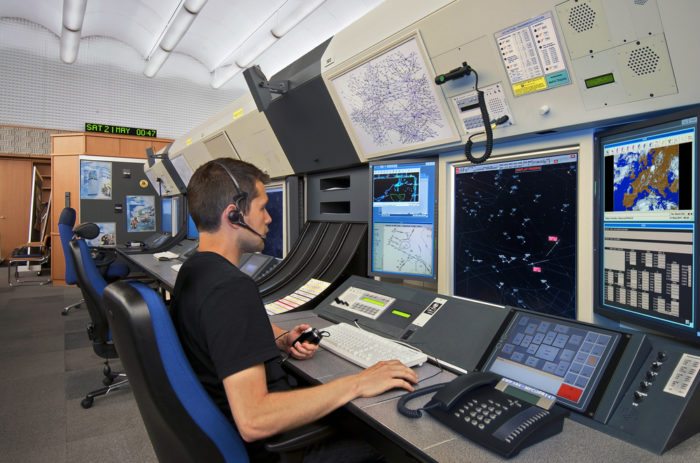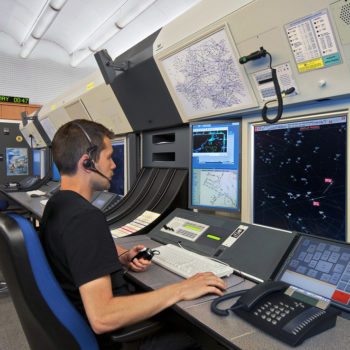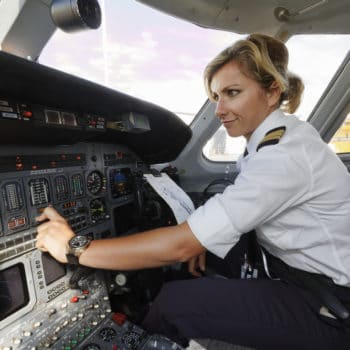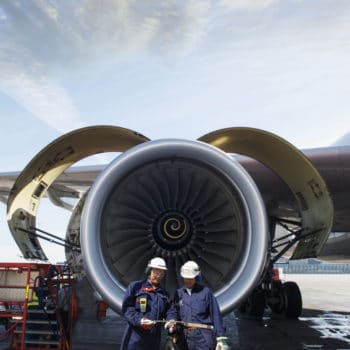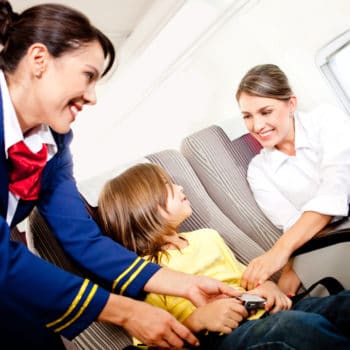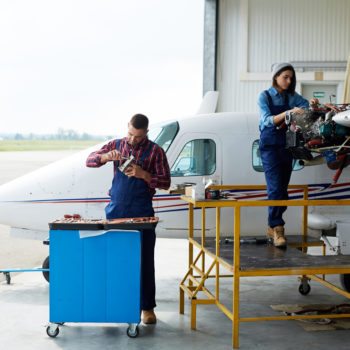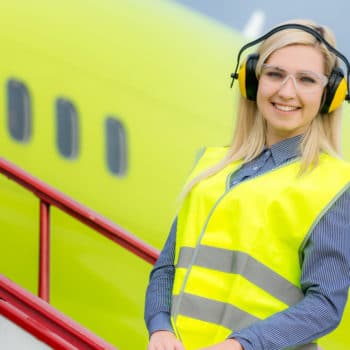Why We Love It
-
$118,740Potential Avg. Salary
-
-8.6%Job Growth Rate
-
Fast Paced CareerCareer Attribute
-
Good Entry Level SalaryCareer Attribute
Air traffic controllers keep passengers safe by ensuring planes and other aircraft navigate the skies at a safe distance from each other. They also help reduce delays at airports and airfields by directing traffic and finding alternative pathways for incoming and outgoing aircraft.
Recommended Schools
What is an Air Traffic Controller?
The following job responsibilities are common for individuals in air traffic controller roles:
- Communicate with pilots and other personnel about flight plans, flight paths, takeoffs, and landings
- Monitor incoming and outgoing flights and flightpaths to ensure all aircraft fly at a safe distance from each other
- Find alternative pathways for flights to reduce traffic and airport delays
- Communicate with pilots about delays, closures, severe weather, or any other information that could impact flight plans
- Direct ground traffic on airport taxiways, runways, and hangars
A Day in the Life
Air traffic controllers play a critical role in ensuring safe air travel. They monitor the skies around an airport, communicating with pilots about flight plans. With hundreds or thousands of aircraft in the skies at any one time, air traffic controllers are responsible for making sure that all aircraft stay a safe distance away from each other to prevent crashes. They also work to prevent delays by offering safe, alternative flight plans to pilots to reduce congestion on busy runways.
When unplanned issues arise—runways close or are congested, pilots must alter their flight plans, or severe weather hits—air traffic controllers are responsible for informing affected pilots and working with pilots to create alternate plans. This may include forming alternative flight paths, diverting planes to alternative runways or airports, or asking planes to stay on the ground or in the air until situations are resolved. They are exceptional communicators who respond to issues quickly and calmly.
While some air traffic controllers are responsible for controlling sky traffic, other direct traffic on the ground at airports. They instruct ground vehicles to vacate areas where planes are landing or taxiing, tell planes which runway to use for takeoff, inform pilots of gate changes, and direct pilots to park at the correct hangar. These air traffic controllers—called tower controllers—keep airport personnel and passengers safe during ground travel, and reduce the number of delays related to vehicles navigating airport runways and taxiways.
Typical Work Schedule
Most air traffic controllers work full-time schedules, and some work overtime. Air traffic controllers may need to work during all shifts, on weekends, and even on holidays to monitor and direct incoming and outgoing flights from popular airports.
Projected Job Growth
With modern air travel becoming more affordable, the number of planes in the skies has increased. This is expected to increase demand for air traffic controllers over the coming decade.
Air Traffic Controller Specializations
- En-route controllers control traffic within certain airspaces away from airports.
- Approach and departure controllers manage arriving and departing flights to ensure takeoffs and landings are smooth and without issue.
- Tower controllers manage ground traffic by directing ground vehicles and taxiing planes on airport runways and taxiways.
Typical Employers
Most air traffic controllers work for the federal government and are employed by the Federal Aviation Administration (FAA).
Recommended Schools
How To Become an Air Traffic Controller
There are three distinct paths to becoming an air traffic controller. The first requires only a high school diploma and at least three years of professional work experience in the aviation industry. The second is to earn a bachelor’s degree in a field related to aviation. Applicants with either of these two backgrounds will be allowed to submit for an FAA pre-employment screening and take the Air Traffic Standardized Aptitude Test (AT-SAT). Both must be passed to apply for open air traffic controller roles. For these two paths, self-training for the AT-SAT is usually required.
The third path to becoming an air traffic controllers is to find a school that offers an Air Traffic Collegiate Training Initiative (AT-CTI) program. This is an FAA-accredited program is designed specifically to train aspiring air traffic controllers and results in either an associate’s or bachelor’s degree. The benefit of this program is that it provides a thorough education on the topics that appear in the AT-SAT test, and it culminates in the student earning a degree. After graduation, students can apply for open air traffic controller roles.
To become an air traffic controller, you must complete a training course at the FAA Academy before turning 31, you must pass both the pre-employment screening and AT-SAT test, you must be a U.S. citizen, and you must pass medical and physical exams. Because of the critical nature of the work, the FAA takes several steps to ensure air traffic controllers are fit for the role. If you’re able to meet all of the requirements and find an open position, you can train for the role at the FAA academy before starting your new career as an air traffic controller.
Air Traffic Controller Salary Data
We’ve provided you the following to learn more about this career. The salary and growth data on this page comes from recently published Bureau of Labor Statistics data while the recommendations and editorial content are based on our research.
National Anual Salary
Low Range
$86,330Average
$118,740High Range
$172,590National Hourly Wage
Low Range
$42/hrAverage
$57/hrHigh Range
$83/hrHow do Air Traffic Controller salaries stack up to other jobs across the country? Based on the latest jobs data nationwide, Air Traffic Controller's can make an average annual salary of $118,740, or $57 per hour. On the lower end, they can make $86,330 or $42 per hour, perhaps when just starting out or based on the state you live in.
Salary Rankings And Facts
#31 Nationally for All Careers
Above Average Salary Nationally
Programs and Degrees
Here are the most common degrees for becoming an Air Traffic Controller. a is usually recommended and specifically a degree or coursework that prepares you for the particular field, see below.
Highest Education Among Air Traffic Controllers
- 0.3% Doctorate
- 4.5% Masters
- 32.2% Bachelors
- 16.2% Associates
- 33.4% College
- 13.2% High School
- 0.3% Less than High School
Job Growth Projections and Forecast
2014 Total Jobs
24,5002024 Est. Jobs
22,400Job Growth Rate
-8.6%Est. New Jobs
-2,100How does Air Traffic Controller job growth stack up to other jobs across the country? By 2024, there will be a change of -2,100 jobs for a total of 22,400 people employed in the career nationwide. This is a -8.6% change in growth over the next ten years, giving the career a growth rate nationwide of Above Average.
Growth Rankings And Facts
#739 Nationally for All Careers
Above Avg. Growth Nationally
What Companies Employ The Most Air Traffic Controllers
| Industry | Current Jobs | New Jobs Needed | % Increase |
|---|---|---|---|
| Federal government, excluding postal service | 22,200 | -2,300 | -2% |
| Support activities for air transportation | 1,700 | 100 | 0% |
| Scheduled air transportation | 400 | --- | --- |
